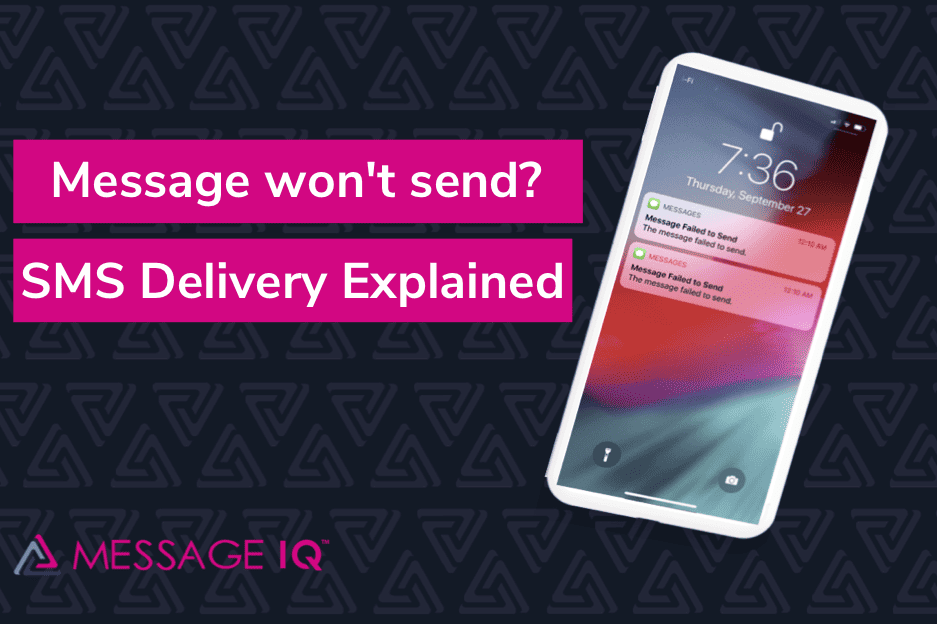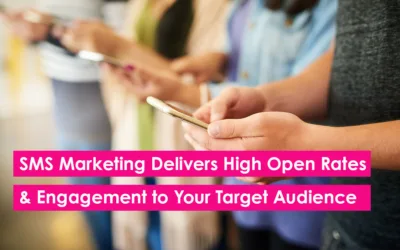SMS deliverability is the ability to deliver text messages to subscribers’ phones. It’s what marketers use to gauge the likelihood of their SMS campaigns reaching their subscribers’ mobile phones related to actual delivery.
Wireless carriers, including AT&T, Verizon, T-Mobile, and Sprint, monitor SMS sent over their networks to prevent spam delivery. When an outgoing SMS is judged as spam, the message does not reach its destination.
In this guide, you’ll learn:
- Key factors that affect SMS deliverability
- How to improve SMS deliverability
- What to measure for SMS deliverability
Three key factors that affect SMS deliverability
There are a few elements that hurt deliverability marketers should look out for. Among them are:
- Carrier spam filters. A message that looks like spam can get blocked by a telecommunications carrier. Spam messages include alphanumeric or identical sender IDs, similar text messages to large groups, and no opt-out instructions. Personalize your text messages, and time them to send little by little to avoid spam filters.
- Phone Issues. Sometimes deliverability is out of your hands. A receiver’s phone could be turned off or disconnected, their phone is on roaming, they accidentally gave you a landline number or gave you the wrong number. Phone issues are the most common reason for SMS delivery failures.
- Grey routes. When you use grey routes, your message moves through different locations before landing in a subscriber’s phone. Messages can get lost or judged as spam along the way and get blocked. MessageIQ does not use grey routes to deliver SMS to ensure the deliverability of your campaigns.
Note that most deliverability issues are because of invalid numbers. If a subscriber changes their number or gives you a fake one, your message won’t reach their phone. The best you can do is delete the subscriber once you see they aren’t receiving texts to improve your delivery score.
Seven tips to improve SMS and MMS message deliverability
- Review your contacts. Regularly remove incorrect or out-of-service phone numbers and unengaged contacts. You’ll see better SMS metrics and will boost your sending reputation.
- Offer double opt-in to your subscriber list. When you set up double opt-in, contacts who give their phone number will receive a follow-up text to confirm sign-up. This extra step can help you avoid fake or mistyped phone numbers and ensures new SMS subscribers are actively engaged with your content.
- Make sure your messages are not spammy. For each message you send, include opt-out instructions, concise language, and proper capitalization and punctuation to avoid carrier filters and blackout lists.
- Always identify yourself. Sometimes people forget they signed up for your subscriber list. Avoid being judged as spam by identifying yourself as the sender.
- Don’t send bulk SMS too fast. When high volume SMS messages are sent from a 10-digit long number, carriers sometimes filter out messages that their systems flag. One way to improve SMS deliverability is by using several sending numbers to avoid having all the volume come from one number. An SMS marketing platform like Message IQ does this automatically to get your messages delivered.
- Avoid sending links to domains you don’t control. One thing carriers look for when deciding to deliver your SMS is the link domain name. If it’s mysterious or blacklisted, they can block the message, and your contact will never see it. If you want to send links, try to use your domain for shortening links to build a reputation with carriers and improve deliverability.
- Engage in 2-way text with your customers. Texting with your customers is not only a great way to boost sales, but also helps improve deliverability. Carriers can see people are actively engaging in a conversation with your business, which signals you are credible and will likely improve the likelihood of sending your messages in the future.
With these tips, you’ll maintain high SMS delivery rates. Great content and active conversation will ensure you see the highest possible deliverability and boost your campaigns’ effectiveness.
Related: 21 Best Text Message Marketing Templates To Drive Leads and Sales
How to measure SMS deliverability
The message delivery metric is one of seven ways to measure the success of your SMS campaign. While there is no exact time measure text message or SMS deliverability, you can record rates daily, monthly, or quarterly.
The equation is: (TOTAL MESSAGES DELIVERED / MESSAGES SENT) x 100
If you’re using an SMS marketing platform like Message IQ, you can find SMS or text message deliverability rate in the analytics dashboard.
Note that message deliverability isn’t how many messages are sent. It only measures how many messages were delivered versus the number intended in a specific time frame. Since deliverability focuses on intention, Message IQ can increase deliverability by regulating the number of messages sent and provisioning new numbers to avoid carrier volume limits.
Final thoughts
SMS deliverability is the rate at which messages are delivered to your contacts. If you want to run successful SMS campaigns, you’ll need to send non-spammy and valuable texts.
Need help with that? Read our article on 13 Powerful SMS Marketing Tips for Hubspot Marketers.
SMS Deliverability FAQ
Is SMS delivery guaranteed?
No, SMS delivery is not guaranteed. Many factors that impact whether your SMS message gets delivered on time.
How reliable is SMS?
With a 98% delivery rate, SMS is one of the most reliable forms of communication. Research also suggests that 90% of text messages are opened within three minutes of receiving it.
How does SMS delivery report work?
An SMS delivery report, also known as a delivery receipt, informs you that the message sent from your SMS provider was delivered to your receiver’s phone. When you send an SMS, it goes to a Short Message Service Center (SMSC), like Twilio, which tries to make the delivery.
What is the difference between a text message and an SMS message?
SMS is the acronym for Short Message Service. It’s the same thing as a text message. A text message can refer to different message types in your day-to-day life. The difference is that an SMS message only has text — no pictures or videos — and can only contain 160 characters.




